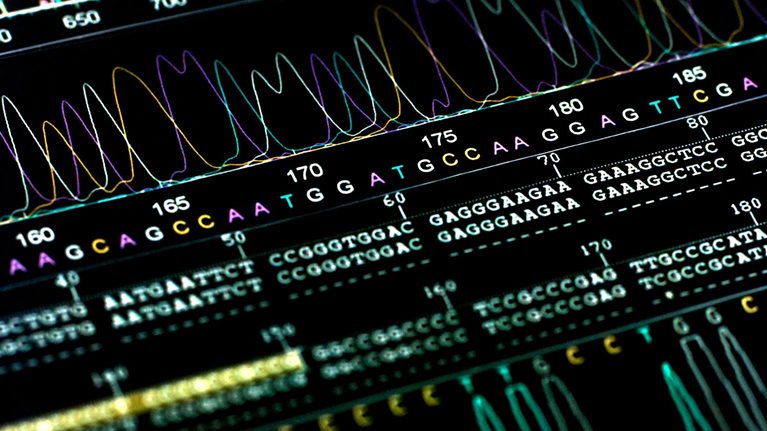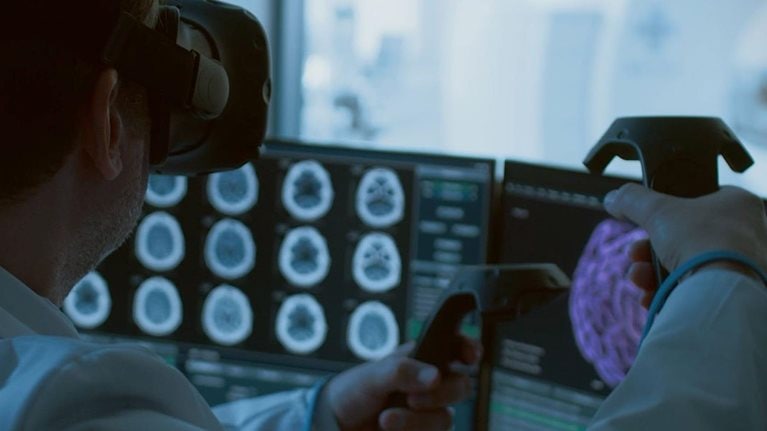Recent scientific advances have made it possible to cheaply and quickly sequence the genomes of large groups of people. For some countries, this has made true population-level genomic studies a real possibility. Denmark and its six million people have embarked on an ambitious journey to build the institutional and technological infrastructure needed for genomic mapping of the population. The benefits? Better medical treatment for patients and fewer side effects from it. But the journey comes with challenges of many kinds. McKinsey’s Christian Harbo Madsen and Martin Møller recently spoke with Peter Løngreen, chief technology officer of the Danish National Genome Center, about the initiative. The following is an edited version of their discussion.
McKinsey: What is Denmark trying to achieve with the National Genome Center?
Peter Løngreen: The overriding goal is to conduct more targeted medicine than we do today. In many cases, dosages of medicines are not sufficiently tailored for patients. In some cases, more than 50 percent of the drugs we prescribe have no or even adverse effects. The Genome Center hopes to use large amounts of heterogeneous biological data to profile individuals much more closely and prescribe for each one a targeted and more personal treatment. By understanding the differences between individuals’ genomes, physicians can make much more precise diagnoses of diseases.
McKinsey: How did the country decide to embark on this journey?
Peter Løngreen: It was a long and quite complex process that has taken five years or so, and involved a lot of different stakeholders, including local, regional, and state leaders, within the government, in the private sector, and in the universities. Prior to this effort, many academics and others wrote white papers that assessed the idea; I contributed to a few. That background, and the alignment among the many people involved, made it politically viable to start up an initiative like this. Further, a leading private foundation made a commitment to fund part of the initiative. This is one of the first such efforts in the Nordic countries, and I think it is the furthest developed.
McKinsey: When do you expect to see the first benefits?
Peter Løngreen: We recently became operational and have already started to analyze data that may lead to help for children with some rare diseases. We fully expect more such benefits to start flowing right away. I don’t say that we will start curing people immediately; that’s up to our physicians. I also think we will see some derived effects of these initial efforts, because, as we proceed from one therapeutic area to the next, we will build a data foundation that will benefit the next patient groups that we’re going to sequence. They will then be able to benefit from more targeted treatments and diagnostics.
McKinsey: What do you find most exciting about the center? What parts of the vision are the most provocative?
Peter Løngreen: It’s the ability to do large-scale data integration in a way we have not done before. My team’s background is in supercomputing, IT architecture, and software development. We do not necessarily have the complete understanding of the cause and effect of diseases that doctors have. But to assemble all these professionals, physicians, tech experts, and biologists in one place is powerful. Those sessions have yielded insight that we can translate into functioning IT infrastructure. I am excited, because this is interdisciplinary work on a much larger scale than we have seen before.
McKinsey: What are the most important elements in building a national genome center? If you were to advise someone else, where would you start, and where would you pay the most attention?
Peter Løngreen: Don’t underestimate the importance of aligning the interests of different stakeholders. There’s a mix of political and technical challenges, and normally they don’t go too well together. That’s where I would start. The technology is less important—we have a pretty good idea about how to go about these things. In this kind of effort, there will be a lot of public scrutiny and political attention. You will need to take considerations that are not purely technical. But if you do that too often, you build compromises and inherent weaknesses into the infrastructure. That’s why unifying the various interests is crucial for all emerging initiatives in this area.
McKinsey: Other countries are moving ahead with their own efforts on a national-genome-sequencing program. How does the Danish initiative differ from theirs?
Peter Løngreen: One point of distinction might be that Denmark has a strong tradition in life sciences, with a history of excellence in the hospitals and at universities that we were able to build upon. We also looked at what other initiatives had done, and then tried to import the good stuff and see if we could do better in areas where it makes sense. For example, the genome center is capable of working with other kinds of data, not just the genome. I think that’s a strong point. You need data types other than just genomics to practice precision medicine. Genomics is not self-explanatory.
McKinsey: What have been the most interesting management challenges for you? How did you handle them?
Peter Løngreen: My background is in IT, so I have a “trial and error” approach. When you develop software, early versions can be bad—but there’s a reason for that. If you spend too much time trying to make the perfect system, you end up in a situation where others will outcompete you and overtake you. But this modus operandi is different from how physicians work; they prize exactness and certainty. That goes for bioinformatics as well. So, we have three or four different kinds of professionals with different mind-sets, who need to be aligned; that’s been our main managerial challenge. We have been vocal with everyone about the need for alignment on our shared goals.
McKinsey: What about data management? The National Genome Center is handling large data sets related to genome sequencing. What are the challenges there?
Peter Løngreen: Handling the large volumes of data from genomics hasn’t been an issue. Rather, the challenge has been to organize the different kinds of biological data used for precision medicine. You don’t want to have too many copies of data. Also, the data we are working with operate at different levels of abstraction and need different protocols to be served. You want to be able to integrate them. It requires a lot of consideration to build the metadata level, for example. Even organizing the basic level of the infrastructure is complex: deciding how data should be worked with to avoid excessive copying, situations where you cannot integrate data, and so on. The final part of the data challenge has been making it easy for doctors and physicians who don’t have an IT background to work with these kinds of data, given the complexities that I described. We are continuing to work on this part of the challenge.
McKinsey: That’s very interesting. As you suggest, the data you can collect from the Danish population is probably less than in other nations, with larger populations. Will that be a challenge for you?
Peter Løngreen: I think this is something we will address by collaborating on virtual data between countries. I don’t think we will ever get to the point of sending genomic data across borders. But with our technology and the testing we have done on person-sensitive data in research projects, we can grant access to data, safely and with confidence. We won’t move the data, and we will control completely how the data is accessed and how it is used. Eventually, with this kind of access, we will see machine–machine interaction across borders that can build larger virtual data sets, and get to much larger cohorts than the Danish population.
McKinsey: Speaking of which, privacy is one of the biggest issues in technology and society today. What are the biggest privacy challenges you have faced?
Peter Løngreen: We have designed the National Genome Center on “privacy by design” principles (when systems are designed with privacy as a priority). But our citizens and our society are rightfully concerned with questions about whether our data is being used for the right purposes. That is why the systems we are building should be balanced to protect people’s privacy while also securing public support for the initiative. This is also why the design principles we have applied are not primarily focused, as in a normal IT system, on performance—instead, they are focused on security considerations. We are putting in place a number of measures so that the public can trust the infrastructure and be confident that the data are not used for purposes not authorized by law.
You need data types other than just genomics to practice precision medicine. Genomics is not self-explanatory.
McKinsey: Right now, your focus is on the clinical use of whole-genome sequencing. What’s the next step for the National Genome Center? How can researchers and private companies begin to use the infrastructure?
Peter Løngreen: We hope that’s going to be easy, because we have built the infrastructure in a way that researchers and clinicians can get equal access. Of course, the clinicians will always have first rights. But researchers can also use the data, provided that their application is approved by our ethical-science committee, and that their projects have adequate security for sensitive personal data in their design and structure.
McKinsey: How do you see the differences between clinical and research use of the national genome?
Peter Løngreen: I think the way we have built the infrastructure should allow for some spillover between research and clinical use, a kind of virtuous circle. In many cases, the tools and data foundations that the clinics wish to use are the tangible outcomes of research projects. The clinic will then feed the findings back into the research community, with the hope of investigating the many quality issues and measures that have not yet been examined by researchers.
McKinsey: Say it’s 2030. What would you like the National Genome Center to be known for?
Peter Løngreen: Two things. First, I hope that within ten years we will be creating meaningful differences for patients. Second, I would like us to be known as the place where we store the most valuable person-sensitive data of the Danish people, and that we have gained so much trust from the public and all our stakeholders that the National Genome Center is considered the natural facility for storing and working on these data.


